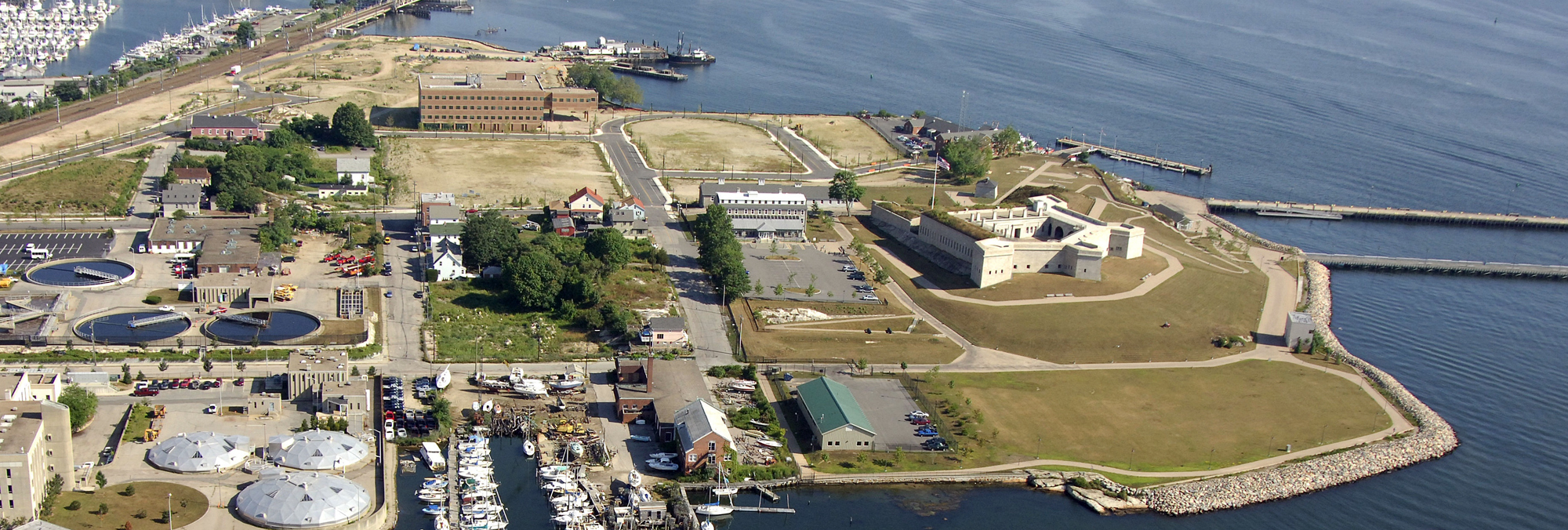New London’s Rich Historical Past
Dating back to the Revolutionary War, New London has been the backdrop of some of the most significant scenes in American History. Today, more than 200 years later, much of the city’s storied past has been preserved and honored, with historical landmarks and museums open to visitors who wish to learn more.
September 6th, 1781 is a day that still lives in infamy in Connecticut history. On this day, British troops led by America’s most renowned traitor, General Benedict Arnold, attacked the city of New London, burning much of it to the ground. Their attack began at Fort Trumbull before ending across the river at Fort Griswold. When they were through, the city of New London was nearly leveled, and it’s estimated that more than 140 buildings around Bank Street including homes, shops and warehouses were destroyed, as were several ships in the harbor. This act was particularly spiteful and calculated as Arnold, having been outed for his traitorous actions the previous year, knew of New London’s intricacies and vulnerabilities and intentionally struck where the most damage would be done. To this day, his name is synonymous with destruction in the city, and a parade and annual burning of his effigy has taken place over the years to denounce his actions.
One of the few structures that remained after “Arnold’s Raid on New London” was the Shaw Mansion, thanks to its stone exterior. Built by Captain Nathaniel Shaw in 1756, the home was once visited by General George Washington, when he passed through New London as he moved his army from Cambridge to New York in April of 1776. Shortly after his visit, Nathaniel Shaw, Jr., a major revolutionary and First Selectman of the town at the time, was named as Naval Agent for Connecticut, and the house became headquarters for Connecticut’s Navy. After five-generations in the Shaw family, the mansion was sold by Jane Perkins (a relative by marriage) to the New London County Historical Society in 1907 and is currently used as its headquarters.
While Fort Trumbull’s only official military action was during Arnold’s Raid, it has still played an important role in history over the years. The Fort was named after Jonathan Trumbull, the governor of Connecticut during the Revolutionary War. During the Civil War, the fort was used as a training facility for Union troops. From 1915 – 1932 the fort was home to the first U.S. Coast Guard Academy and from 1939 – 1946 it served as the Maritime Officers Training School, graduating more than 15,000 recruits. The fort’s final “tour of duty” occurred during the Cold War, when it became the location for the Naval Underwater Sound Laboratory from 1946 to 1970, developing sonar and related systems for US Navy submarines. After a period of restoration, Fort Trumbull State Park opened in June of 2000. The current fort structure was the third iteration and was built between 1839 – 1852. Today, visitors to the park can tour its grounds, visit an onsite museum, walk along the fishing pier, or take a water taxi along the Thames River.
Another important part of New London’s history was its role in the Whaling Industry. By the mid-19th century, New London was the second largest whaling port in the world. Upon the development of steam engines and other machinery during the industrial revolution, the demand for fine lubricants drastically increased, with oil from a sperm whale being the finest of them all. Given New London’s optimal location and prime ports, it became a key player in the industry and by 1846, had more whaling ships at sea than any other city besides New Bedford, MA. Nearly all of New London’s economy at the time revolved around the industry, from ship builders to sail makers, to coopers (who made barrels to hold the oil and other provisions) to bakers to bake the ships’ bread. There were also rope makers, block makers and blacksmiths, as well as photographers, cigar merchants, clothing stores and saloons, all catering to men about to head out to sea.
By the turn of the 20th century however, the whaling industry began to sharply decline, as cheaper and easier to find alternatives to sperm oil were discovered. On September 24, 1908, Captain James Buddington and his crew unknowingly embarked on the last commercial whaling voyage in Connecticut History, sailing aboard the whaling schooner Margaret out of New London.
Today, Whale Oil Row still stands on Huntington Street in downtown New London, showcasing the wealth that the industry once brought to the city.

